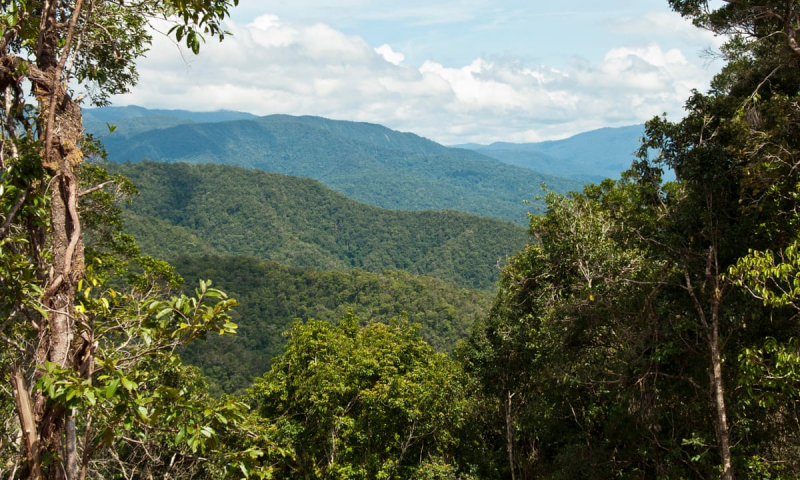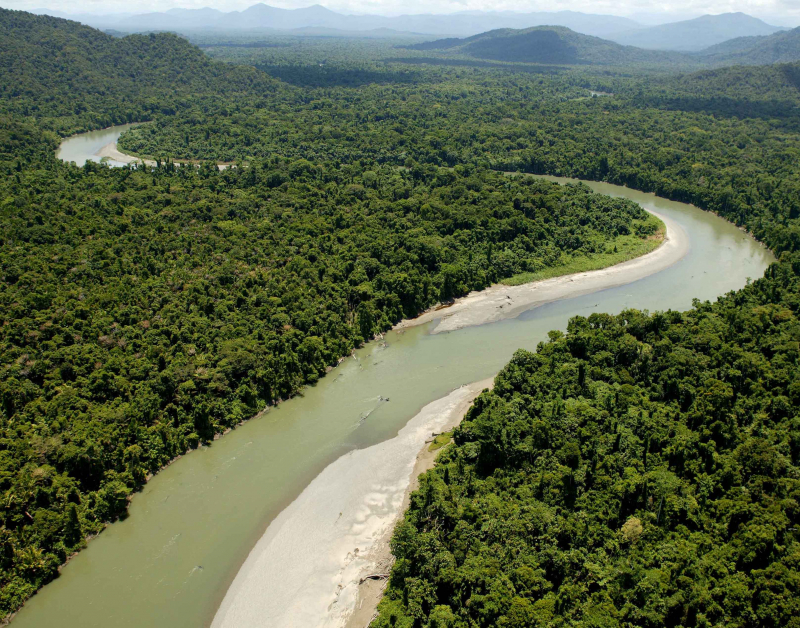New Guinea Rainforest

New Guinea Rainforest cover more than half of the country's surface, encompassing 303,500 square miles of enormous hilly landscapes. The New Guinea rainforest is home to indigenous peoples and native animal species who have had little to no contact with the outside world due to its island location.
The large Fly River watershed, which is born in this heavy rainfall zone, is ecologically dependent on the rain forests of this ecoregion. Hopea celtidifolia and Vatica russak dominate the lowland hill woods, while Podocarpus and Lithocarpus dominate the lower montane elements. Except for considerable communities near the Ok Tedi mine in the west, the Upper Fly lowlands constitute a huge tract of sparsely populated, old-growth wet rain forest, which is typical of the Upper Fly platform's unusually rich biota. This ecoregion also has Araucaria forest, Castanopsis, Quercus, traditional medicinal and food plants, nutmeg, and traditional spirit trees, all of which are botanically unknown. The mammalian fauna consists of a wide variety of tropical Australasian marsupials, including a tree kangaroo. The ecoregion contains sixty-nine mammal species, thirteen of which are endemic or near endemic; Flannery and Groves 1998; Bonaccorso et al.,. Bulmer's fruit bat and the large pogonomelomys are critically endangered, whereas the lesser tube-nosed bat , New Guinea sheathtail-bat , Fly River horseshoe-bat , and Papuan mastiff bat are considered vulnerable.











